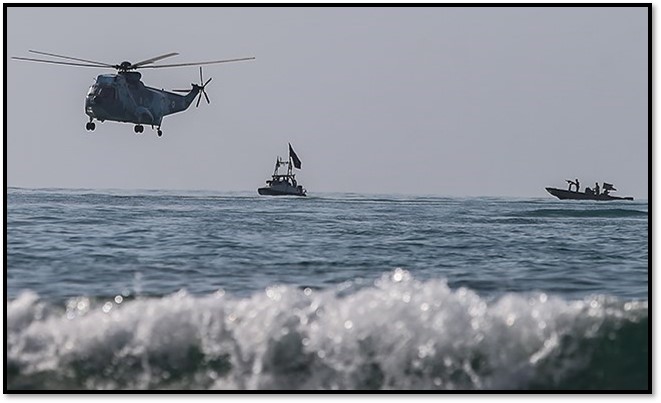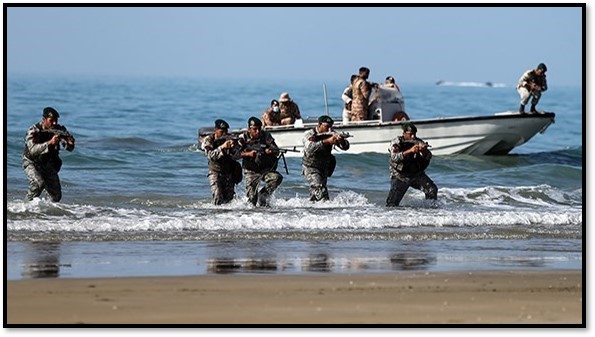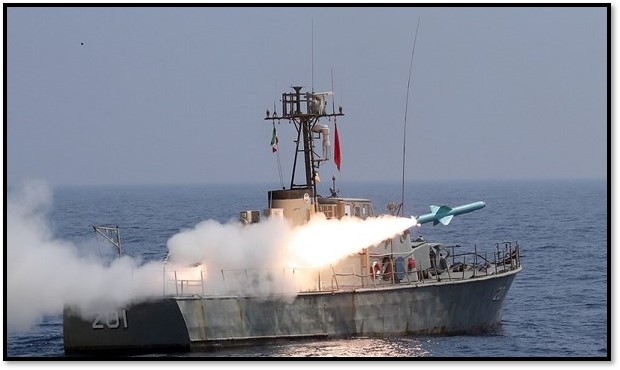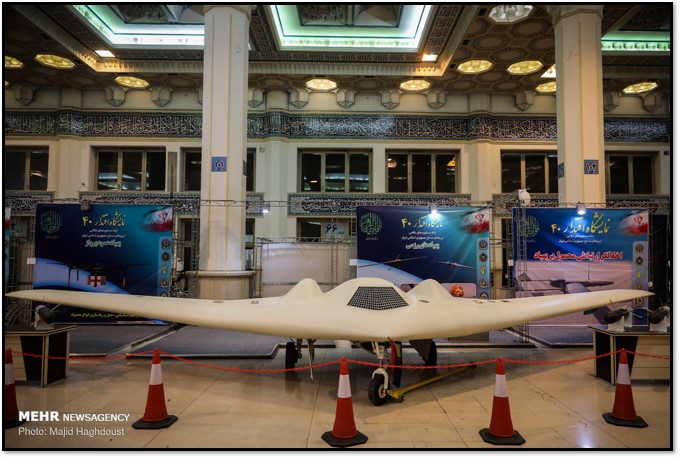Between September 10 and 12, 2020, Iran tested cruise missiles and drones during an annual three-day war game. The Zolfaghar-99 exercise, named after Imam Ali’s sword, was held around three key waterways — the Strait of Hormuz, the Sea of Oman and the northern Indian Ocean, an area totaling 772,200 square miles (or two million square kilometers). Iran’s conventional navy, army and air force participated, although the Revolutionary Guards did not. The goal was to test military capabilities at sea, both offensively and defensively. The war game boosted Iran’s “readiness and military capability,” said Rear Admiral Habibollah Sayyari, deputy commander of Iran’s military.

Iran's army, navy and air force held joint exercises from September 10-12
During the exercises, Iran claimed that it chased away U.S. drones and military aircraft — including a P-8 Poseidon patrol aircraft, MQ-9 Reaper combat drone and RQ-4 Global Hawk surveillance drones—that were spying on the Iranians. “The Air Defense Force warned all foreign drones flying near the exercises site to leave the general area of Zolfaqar drills," Rear Admiral Shahram Irani said. "Since then, we have been witnessing a noticeable change in the activities of American drones." U.S. Central Command did not comment on Iran’s claims or the war game.
Commandos conduct an amphibious assault
The weapons tested were not new, but most of the missiles and drones had not been used in previous wargames. During Zolfaghar-99:
- The army fired the Qader medium-range anti-ship cruise missiles at sea targets. The Qader, a medium-range anti-ship cruise, missile has a maximum range of 155 miles (250 km).
- The navy launched Jask-II anti-ship missiles from submarines and Nasr anti-ship missiles from surface vessels. The Nasr, a short-range anti-ship cruise missile, has a maximum range of 25 miles (40 km). The Jask-11, a submarine-launched missile, has an unknown range. But Rear Admiral Hossein Khanzadi said that it displayed a “longer range” than older models that could hit a range of 19 miles (35 km). Marines and navy commandos also landed on vessels from helicopters and conducted amphibious assaults against coastal targets.
- The air force fired anti-air missiles, including the Shalamcheh, a short-range anti-air missile, that has an average range of 25 miles (40 km). Pilots flying F-4 Phantoms conducted refueling missions in mid-air and bombed naval and coastal targets.
Missiles
Iran’s conventional military tested several short-range and medium-range missiles by land, sea and air. The tests were a “giant step” toward improving Iran’s defense capabilities, Admiral Irani said. He also claimed that Iran had mass-produced cruise missiles for its 19 submarines, which all operate outside the Gulf in the Arabian Sea. (The IRGC does not have submarines, and the regular navy does not typically operate in the Persian Gulf.)
Related Material: Iran’s Arsenal of Cruise Missiles

Iran's navy fires an anti-ship missile
Drones
The air force tested four types of drones. The Ababil, Karrar and Kaman drones monitored the wargame from the skies, while Simorgh drones conducted combat and reconnaissance missions.
- The Simorgh, Iran’s most advanced drone, flew more than 620 miles (1,000 km). It used “smart and pin-point bombs” to hit naval targets, Admiral Sayyari said. The Simorgh has a maximum range of 930 miles (1,500 km) and can fly for 24 hours without being refueled. It was first unveiled in December 2019.
- The Ababil-3 has a maximum range of 93 miles (150 km) and can fly for up to 3 hours. It was first unveiled in April 2020.
- The Karrar has had a maximum range of 620 miles (1,000 km) and can fly for up to 3 hours. It was first unveiled in August 2010.
- The Kaman-12 has a maximum range of 620 miles (1,000 km) and can fly for up to 10 hours. It was first unveiled in January 2019.
Related Material: Iran’s Drone Fleet

A Simorgh drone on display in Tehran
Photo credits: War game via Tasnim News Agency (CC by 4.0), Commandos via Tasnim News Agency (CC by 4.0), Anti-ship missile via Fars News Agency (CC by 4.0), Simorgh drone via Mehr News Agency (CC by 4.0)
Andrew Hanna, a research analyst at USIP, assembled this report
